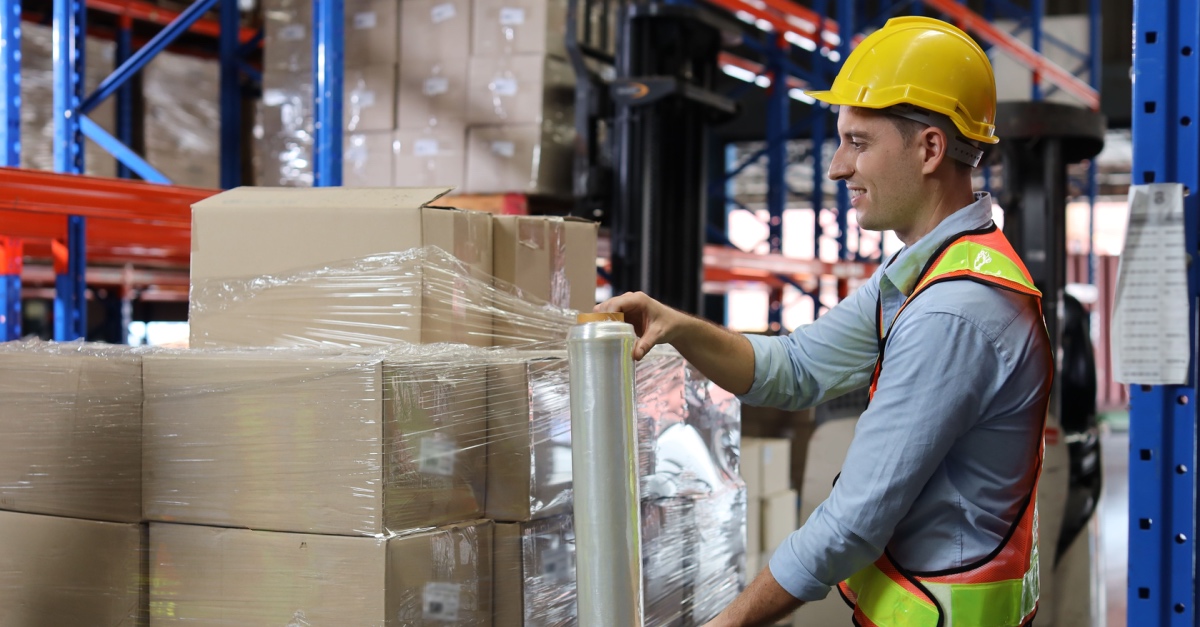

Retail distribution will get interesting in 2024. With the sector in a transition year after a challenging 2023 and some economic indicators ticking hopefully northward, companies will be looking to invest in innovation and cost effective measures to position themselves for success.
Retail distribution has the advantage of scale and route density vs. the largely onesy/twosy, multi-stop nature of DTC and e-commerce. It’s no accident that major carriers are pursuing a customer mix tilted toward more profitable B2B accounts. Having said that, overall volumes are down, and carriers are discounting to draw in business while slashing costs. A prime example: UPS’s recent move to unload freight brokerage arm Coyote Logistics
Retail distribution by brands and manufacturers involves bulk replenishment of online and store inventory. It leverages:
With lower volumes, it’s definitely a shipper’s market, but that doesn’t mean it’s cheap or easy to manage. This is particularly true of SMBs, which don’t have the volume leverage with carriers that enterprise or mid-market players enjoy. They also often lack internal strengths in supply chain and logistics expertise.
In general, transportation capacity was up in December, pushing prices down. Transportation utilization was up, due in large part to companies returning to a just-in-time (JIT) approach to inventory management vs. a just-in-case strategy.
But more affordable carrier pricing is just the beginning of the story for brand shippers. There are a number of challenges with distributing products to retail trading partners.
Over time, supply chains grow more complex, not less. From the ebb and flow of freight capacity to sourcing strategy – i.e., nearshoring and reshoring – and the evolution of network design, there’s a lot to consider. Contributors to supply chain woes include a growing supplier base, shifting trade agreements, inaccurate forecasts, and poor data management.
Cutting-edge technologies like the Internet of Things (IoT), AI, and blockchain can enhance visibility, efficiency, and security. However, it takes an expert IT hand to oversee integration and utilization. It might be easier for organizations that have invested in digital infrastructure and have sufficient IT bench strength. However, the pervasiveness of older legacy systems and a lack of digital capabilities are hurdles to adopting advanced tools.
Government and corporate mandates and consumer sentiment are creating pressure to adopt more eco-friendly practices, especially reducing carbon emissions. This has serious implications for transportation and distribution, which is still largely fossil fuel-based despite a massive, coordinated push for EV adoption.
Federal and state regulatory changes, such as safety and environmental standards, impact distribution operations. These include limits on the trucker road hours from the Federal Motor Carrier Safety Administration (FMCSA), which require monitoring devices. A proposed FMCSA regulation would require the installation of speed-limiting devices in heavy-duty trucks.
Labor shortages, workforce management, and driver recruitment remain significant challenges in transportation and logistics. Depending on who you listen to, there either is or isn’t an acute shortage of truck drivers in the U.S. Regardless of which side is right, there is a shortage of supply chain and distribution workers, according to a new report from Descartes, which has a negative effect on the movement of goods.
Disruptions such as extreme weather events, geopolitical conflicts, and trade disputes are perennial issues in retail distribution, affecting the availability of finished goods and raw materials. To pick just two such issues, diversion around the Red Sea passage due to worsening terrorist attacks on cargo ships and oil tankers, and an ongoing drought in the Panama Canal – which has cut passages by a third – are causing costly shipping delays and backlogs.
Setting inventory levels to meet forecast demand without overstocking or causing stockouts is a perennially tricky balance. Inaccurate demand planning leads to increased costs, inefficient use of distribution assets, delayed orders, and dissatisfied customers. This is another area where advanced analytical tools tapping the power of AI can lead to better inventory management.
Strict adherence to retail compliance is a must to maintain valuable relationships with companies stocking and selling your products. This takes many forms, including the following:
Routing guides were created in response to the challenges posed by both geographic expansion and the growth of the supplier base. This necessitated a level of uniformity in supplier behavior to avoid logistical chaos.
While that is perfectly understandable, it creates a high degree of fulfillment and distribution complexity from the supplier side, as routing guide standards vary from retailer to retailer. So, the more trading partners, the greater the challenge of maintaining compliance.
To cite just one example, the retail compliance guide for Rite Aid is a 108-page PDF, with the routing/shipping requirements alone taking up 17 pages. Suppliers to department store chain Belk are subject to chargebacks for several factors, including if an order isn’t shipped within the designated window or if the Advanced Shipping Notice (ASN) is not transmitted at carrier pickup.
After Walmart began instituting On Time/In Full (OTIF) requirements for all of its suppliers in 2017, many other retailers followed suit with the behemoth of Bentonville. It was a way for retailers to impose greater supply chain discipline and accountability among their partners, but poses a challenge for brands and retailers.
For example, Ace Hardware favors early deliveries over late ones but places a premium on the predictability of a high percentage of OTIF shipments. “When Ace realizes late shipments, our ability to service our retailers decreases, and we incur incremental operational costs in terms of resources, expediting, transportation, and inventory holdings,” the company’s guide states. “Ultimately, this translates to lost sales, and impacts our retailers’ ability to service their customers.”
While a major CPG is doing mostly economical, efficient full truckloads to retailers, SMBs are likely cobbling together a mix of parcel, less-than-truckload (LTL), and consolidated freight. And each mode has its own variety of options between prepaid vs. collect terms. Under prepaid, there are multiple carriers to choose from, including those on the retailer’s preferred list.
Between macroeconomics – and its first cousin, consumer confidence – seasonality, and ever-shifting shopper preferences, it’s extremely difficult to accurately predict and respond to shifts in product demand.
Consumers are not the only ones demanding fast delivery; it has also entered the realm of B2B distribution, including retail. This goes beyond the OTIF issue, putting pressure on brands to adapt more effective distribution strategies and tactics.
Consider the obvious fact that retail buyers, inventory managers, and warehouse VPs are also consumers themselves, accustomed to the convenience and speed of e-commerce deliveries. Thus, the “consumerization” of B2B has conditioned them to expect similar levels of convenience and speed in their business transactions.
For brands and manufacturers, managing multiple distribution channels is a complex affair. A lot of logistical coordination is involved between retailers, their own e-commerce websites, third-party marketplaces like Amazon and eBay, and drop shipping partnerships.
Given all these challenges facing brand suppliers, you need to arm yourself with strategies and approaches that give you more of an edge in a highly competitive marketplace. Retailers always have choices regarding brand partnerships, so you need to stay on top of your game.
Invest in tools that can boost your performance and help you gain efficiency. As noted before, AI-based predictive analytics are helping companies improve forecasting accuracy. This includes Collaborative Planning, Forecasting, and Replenishment (CPFR) systems that help brands and retailers more closely sync production with inventory levels, reducing stockouts and overstocking.
AI-based tools are also used to save costs through optimized carrier selection and routing. Advanced business intelligence tools help brands and manufacturers gain insights into customer behavior, market trends, and ways to improve operational efficiency.
Reexamine your retail distribution strategy in light of current market conditions and challenges. Consider adopting lean/Six Sigma principles to gain overall efficiency. Periodically review your network design. What tweaks or updates, including adding nodes or even bringing in a 3PL partner, can help you more closely align with your distribution requirements?
The war for talent is on, and companies are hiring experts in roles like supply chain management, inventory management, data science, and automation. Clearly define roles and responsibilities for each position. Develop job descriptions highlighting essential tasks, skills, and qualifications for each role.
Prioritize candidates who demonstrate strong problem-solving and critical thinking skills, enabling them to overcome challenges and optimize processes. Become an “employer of choice” by creating a collaborative, welcoming culture that incentivizes innovation and rewards success.
Brands will continue to face challenges maintaining SLAs that retailers expect as fulfillment becomes more complex and shipping costs invariably rise. Many are partnering with a trusted 3PL because demands will continue to outstrip internal capabilities, and expert help is needed.
Leading 3PLs have strengths in areas like retail compliance, inventory management, distribution strategy, and transportation management – things that are not always a core competency of brands and manufacturers, especially SMBs.
Productiv is an experienced 3PL that can embed in your facilities, or tap the power of its own warehouse network. Productiv specializes in retail and omnichannel distribution, simplifying logistics operations so you can focus on growing your business.
With a working knowledge of compliance programs at 60+ of the largest retailers, Productiv handles the scoping, testing, and approval process for fast onboarding. We also ensure compliance with details such as preferred carriers and packing requirements that vary from retailer to retailer. A full suite of EDI solutions facilitates the sharing of crucial data such as POs, GS-128 labels, and ASNs to ensure compliance and reduce chargebacks.
Productive can also leverage the power of freight consolidation in some cases, saving on shipping costs via truckload and making it easier to hit contracted arrival dates and avoid penalties.
From seamless technology integration to lean logistics practices, extensive carrier relationships, kitting and assembly, and a problem-solving approach, Productiv can handle all your retail distribution needs. To learn more about the benefits Productiv can bring, talk to an expert today.

Indicators of supply chain health are a mixed bag lately. A trade group said “normalcy” won’t be achieved in 2024, while the Fed called them “resilient.”

Warehouse labor management is such an evergreen issue, that it should have its own scientific plant name in Latin. How do we consistently find sufficient labor? How do we maintain productivity? What approach do we use?
Get ideas on how to delight your customers with delivery on their timeline.